
Vegetative

Emergence
The hypocotyl pulls the cotyledons above the soil surface. The growing point is exposed between the two cotyledons.
Management: Fertilizer in the seed row can injure seedlings, especially nitrogen and potassium. Apply up to 1/4 of total nutrient requirements pre-plant. Seed 0.5-1 inches deep, or a maximum of 1.5 inches into moisture. Broadcast or shallow seeding in dry conditions results in poor emergence.

Second leaf
Two leaves fully expanded. The rate of leaf expansion is 7-10 days per leaf.
Management: Scout for insect and slug feeding. Canola should be weed free through to the 4-leaf stage.

Sixth leaf
Six leaves fully expanded. Overwintering success is optimized with a minimum of six leaves prior to frost. Rosettes form a total of 9-30 leaves, depending on conditions.
Management: Throughout vegetative growth, scout for diseases such as blackleg and downy mildew. Nutrient and water demand increases until the overwintering stage.
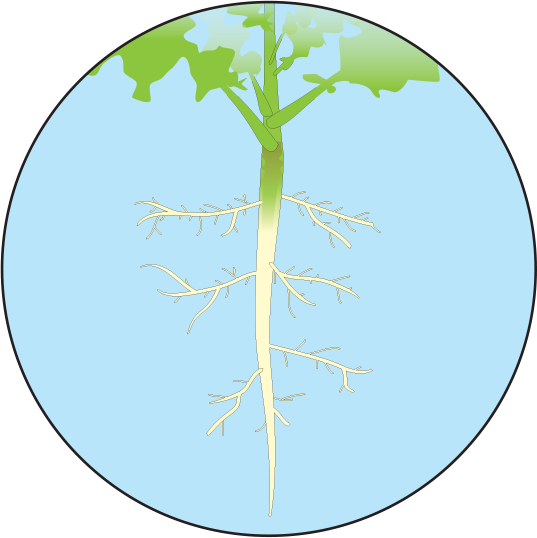
Roots
Canola has a tap root with many lateral, fibrous roots. These roots have a mellowing effect on soil structure. Plants survive on roots throughout the winter. Larger roots in fall improve overwintering success and provide better anchoring to mitigate heaving.
Management: Roots should be the width of a pencil or larger prior to winter. Roots tend to be more robust with earlier planting and lower canola populations.
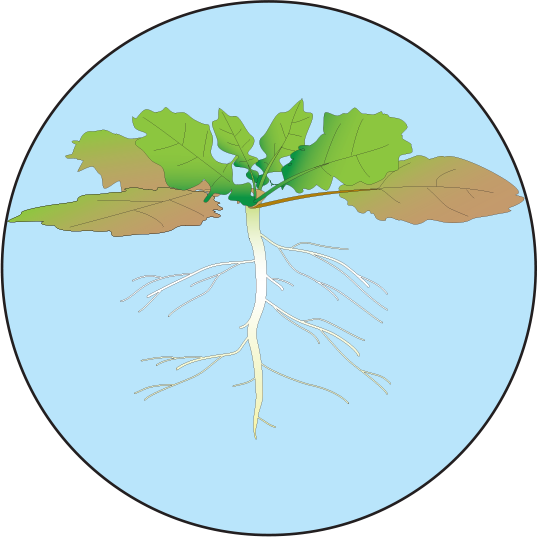
Overwintering
Canola overwinters in the rosette stage. The stem thickens and freezing tolerance increases. In cold conditions, leaves may turn purple or brown. Where there is abundant vegetative growth in the fall, lower leaves may not survive through winter and spring.
Management: Choose well-drained fields with low clay content for overwintering success. Do not seed canola in fields or regions where winter wheat survival is typically poor.
Plant spacing
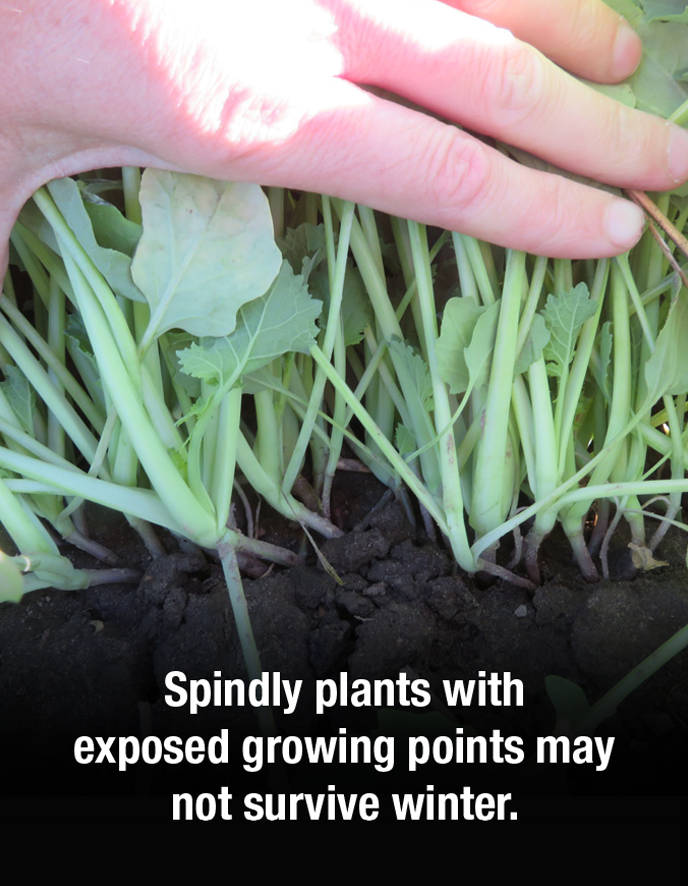
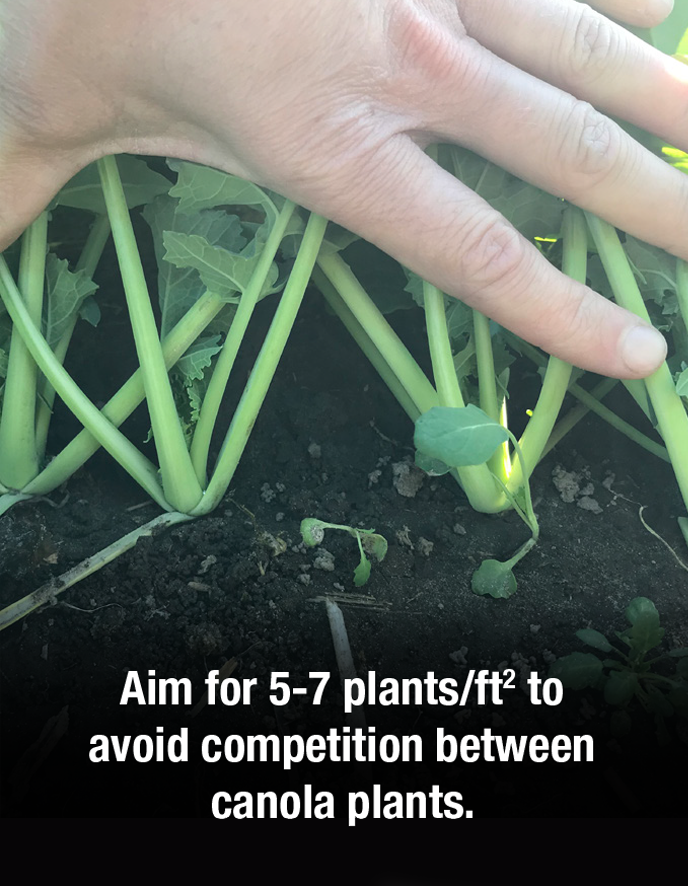
High seeding rates can cause competition between canola plants, resulting in spindly plants and crowns (growing points) raised above the soil surface. Overwintering success is improved when:
- plants are spaced out
- competition is reduced
- plants are more robust
- crowns are snug to the soil surface and less exposed
Seed at 220,000-350,000 seeds/acre (approx. 3-4 lb seed/acre). Row spacing should be narrow, up to a maximum of 15 inches.
Slugs
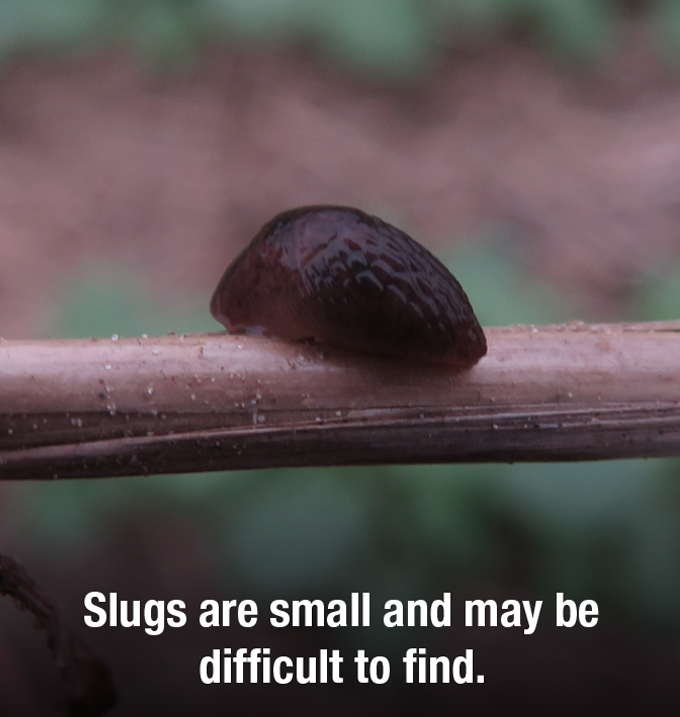
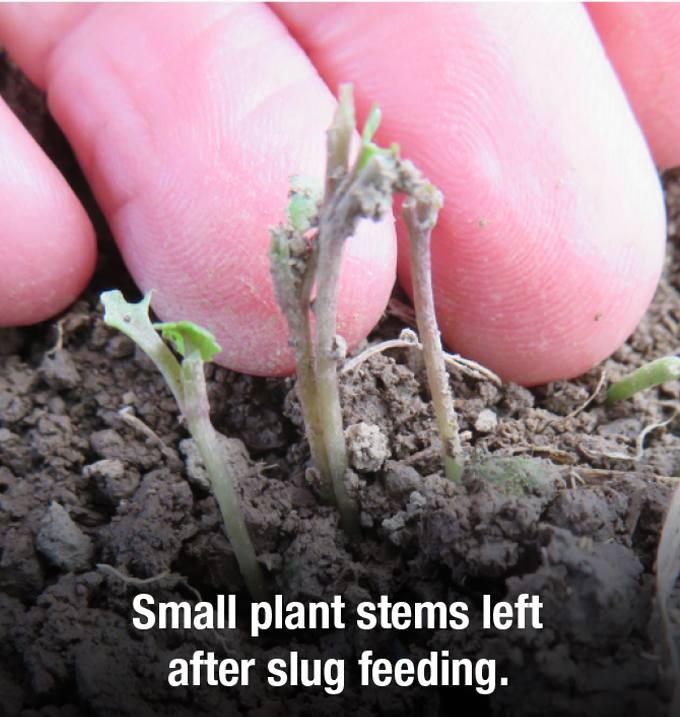
Slugs are abundant in fall and hide in crop residue, and slug feeding at emergence can be misdiagnosed as a seeding or emergence issue.
- There are no in-crop options for slug control.
- Crop residue significantly increases the risk of slug damage.
- The greatest damage occurs when slugs remove cotyledons and growing points shortly after canola emergence.
- Slugs may be small and difficult to find – look for shiny slug trails on leaves or the soil surface.
For more information contact meghan.moran@ontario.ca
Illustrations and reference information provided by Michael J. Stamm and Ignacio A. Ciampitti, Canola Growth and Development, Kansas State University, July 2017.